COCH
-
Official Full Name
coagulation factor C homolog, cochlin (Limulus polyphemus) -
Overview
The protein encoded by this gene is highly conserved in human, mouse, and chicken, showing 94% and 79% amino acid identity of human to mouse and chicken sequences, respectively. Hybridization to this gene was detected in spindle-shaped cells located along nerve fibers between the auditory ganglion and sensory epithelium. These cells accompany neurites at the habenula perforata, the opening through which neurites extend to innervate hair cells. This and the pattern of expression of this gene in chicken inner ear paralleled the histologic findings of acidophilic deposits, consistent with mucopolysaccharide ground substance, in temporal bones from DFNA9 (autosomal dominant nonsyndromic sensorineural deafness 9) patients. Mutations that cause DFNA9 have been reported in this gene. Alternative splicing results in multiple transcript variants encoding the same protein. Additional splice variants encoding distinct isoforms have been described but their biological validities have not been demonstrated. -
Synonyms
COCH;coagulation factor C homolog, cochlin (Limulus polyphemus);coagulation factor C (Limulus polyphemus homolog);cochlin , DFNA9, DFNA31;cochlin;COCH 5B2;COCH5B2;DFNA9;COCH-5B2
Recombinant Proteins
- Human
- Zebrafish
- Mouse
- Chicken
- Rhesus macaque
- HEK293
- Mammalian Cells
- Wheat Germ
- Human
- Human Cells
- In Vitro Cell Free System
- His
- Flag
- GST
- Non
- Avi
- Fc
Background
What is COCH Protein?
COCH protein, known as cochlin, is a protein primarily found in the inner ear and eye. It's linked to hearing and balance, where it plays a role in maintaining the structure and function of inner ear tissues. Mutations in the COCH gene, which encodes this protein, are connected to hearing disorders like DFNA9, leading to progressive hearing loss. In the eye, cochlin appears in conditions like glaucoma, potentially affecting fluid filtration and contributing to disease. Although its precise functions are still being explored, cochlin's involvement in these critical sensory systems makes it a significant focus in medical research.What is the Function of COCH Protein?
Cochlin, the protein encoded by the COCH gene, primarily helps maintain structure in the inner ear. It's crucial for hearing, assisting with inner ear stability and function. Mutations in this protein are linked to hearing loss conditions like DFNA9, as they disrupt its normal role, leading to sound signal issues. Cochlin also appears in the eye, where it could influence fluid dynamics, especially in diseases like glaucoma. While its complete functions are still under study, cochlin's role in ear and eye health makes it an important target for further research into sensory disorders.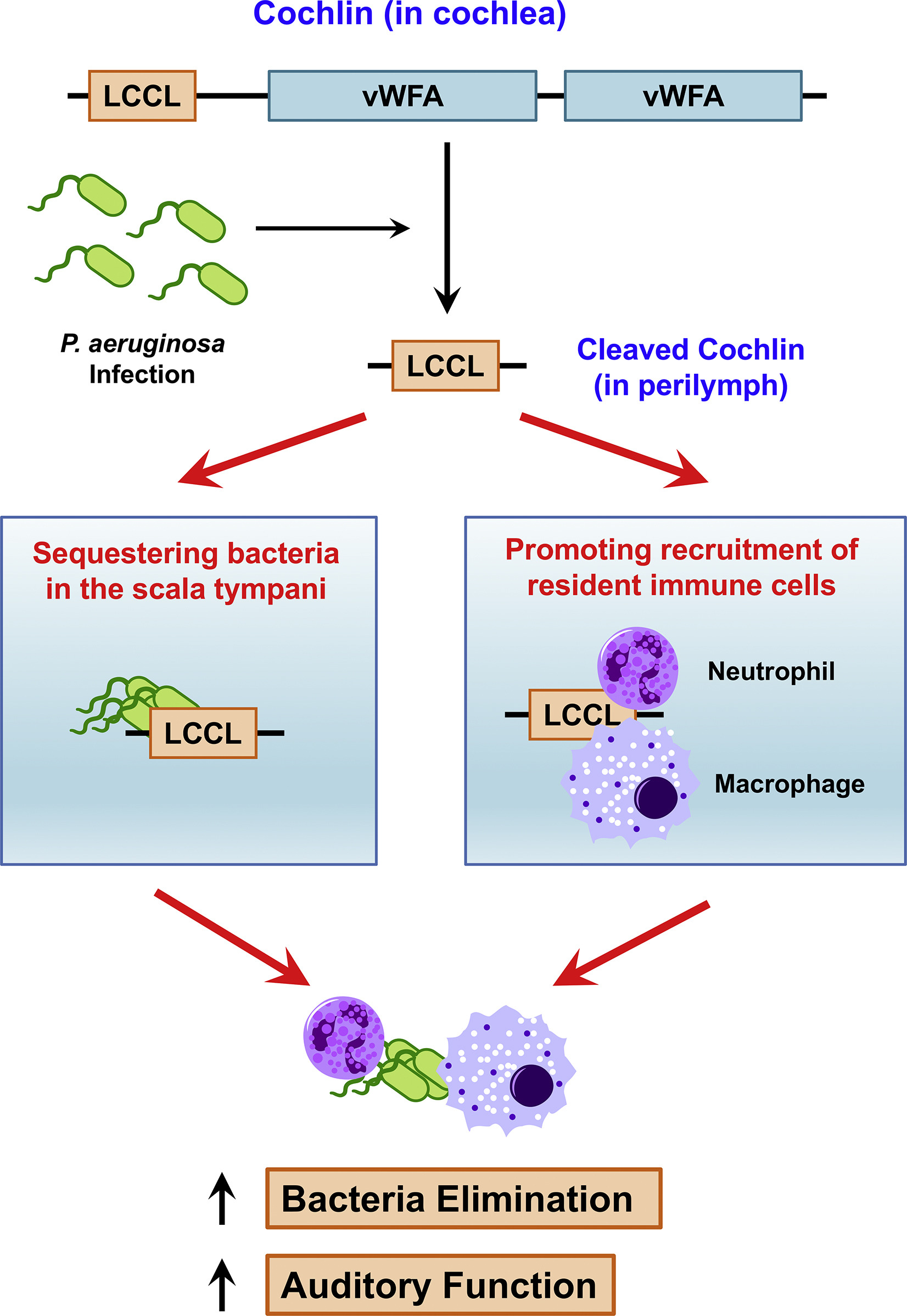
Fig1. Schematic Model Illustrating that Cleaved Cochlin (LCCL) Plays a Dual Role to Trap Bacterial Pathogens and Recruit Immune Cells to Improve the Inner Ear Function. (Kensei Komatsu, 2019)
COCH Related Signaling Pathway
Cochlin, linked to the COCH gene, plays a role in the auditory and visual systems' signaling pathways. In the inner ear, it's involved in pathways that help maintain cellular stability, which is essential for proper hearing function. Disruptions in these pathways can lead to hearing loss, as seen in conditions like DFNA9. In the eye, cochlin is thought to participate in pathways affecting fluid balance, which is important in diseases such as glaucoma. By interacting with these pathways, cochlin helps maintain normal ear and eye function, and understanding these interactions can provide insights into treating related disorders.COCH Related Diseases
Mutations in the COCH gene, which produces cochlin protein, are primarily linked to hearing disorders like DFNA9. This is a progressive condition that typically results in hearing loss and balance problems as it affects the inner ear's normal function. In the context of eye health, cochlin has been associated with glaucoma, where its accumulation may interfere with fluid drainage in the eye, potentially leading to increased intraocular pressure and vision issues. Research into cochlin-related diseases focuses on understanding how these mutations and accumulations disrupt normal sensory functions, aiming to develop targeted treatments for these conditions.Bioapplications of COCH
When we talk about COCH in the biomedical field, it's quite a niche topic. COCH, or cochlin, is a protein associated with inner ear function, specifically related to hearing loss conditions like DFNA9. Researchers have been exploring how mutations in the COCH gene affect hearing and balance, often involving detailed studies of the cochlear structure and associated pathways. There’s a keen interest in understanding these mechanisms because it helps in diagnosing and potentially treating hereditary hearing conditions. This sort of research is often tied to genetic studies where the goal is to map out how specific proteins function in various parts of the human body, and how their dysfunction can lead to disease. Integrating this understanding with other diagnostic imaging techniques is also a part of the ongoing exploration to provide more holistic treatments for hearing impairments.Case Study
Case Study 1: Ikezono T. et al. Biochim Biophys Acta. 2001
Researchers aimed to understand hereditary hearing loss by analyzing inner ear proteins using two-dimensional gel electrophoresis. They found interesting features in a protein related to the COCH gene, linked to hearing issues like DFNA9 and potentially Ménière's disease. This Coch protein constitutes a significant portion of inner ear proteins and shows considerable diversity, suggesting complex processing in the body. While much is known about the genes causing hearing loss, there's less information about the proteins they produce. This research highlights the Coch protein, offering insights into hearing and balance disorders.-
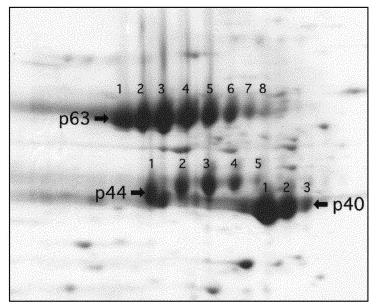 Fig1. Enlarged image of the boxed area of the 2D gel in panel a.
Fig1. Enlarged image of the boxed area of the 2D gel in panel a. -
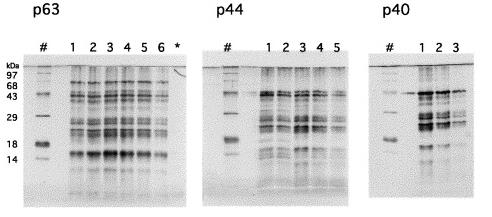 Fig2. Peptide maps by in-gel digestion with Lys-C of p63-1 to 6, p44-1 to 5 and p40-1 to 3.
Fig2. Peptide maps by in-gel digestion with Lys-C of p63-1 to 6, p44-1 to 5 and p40-1 to 3.
Case Study 2: Picciani R. et al. Prog Retin Eye Res. 2007
Aqueous humor, produced in the eye's ciliary epithelium, is key for eye function. Normally, its flow is well-balanced, but diseases can disrupt this. The trabecular meshwork (TM) in the anterior chamber, which acts like a filter, offers most flow resistance. Changes in the TM affect this filtering, though how it works isn't fully known. Cochlin, a protein, shows up in glaucomatous but not in healthy TMs, confirmed by various analyses. Cochlin forms multimers due to shear stress and environmental changes. It's found with mucopolysaccharides in glaucomas and in ears with DNFA9, a hearing issue linked to fluid changes. Cochlin seems to influence TM cell clumping, hinting at roles in adhesion and perhaps mechanosensation.-
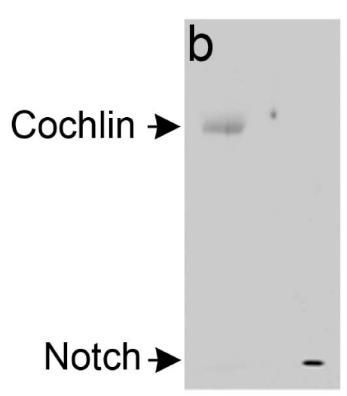 Fig3. Coommassie Blue-stained SDS-PAGE of HA-tagged recombinant cochlin and Notch.
Fig3. Coommassie Blue-stained SDS-PAGE of HA-tagged recombinant cochlin and Notch. -
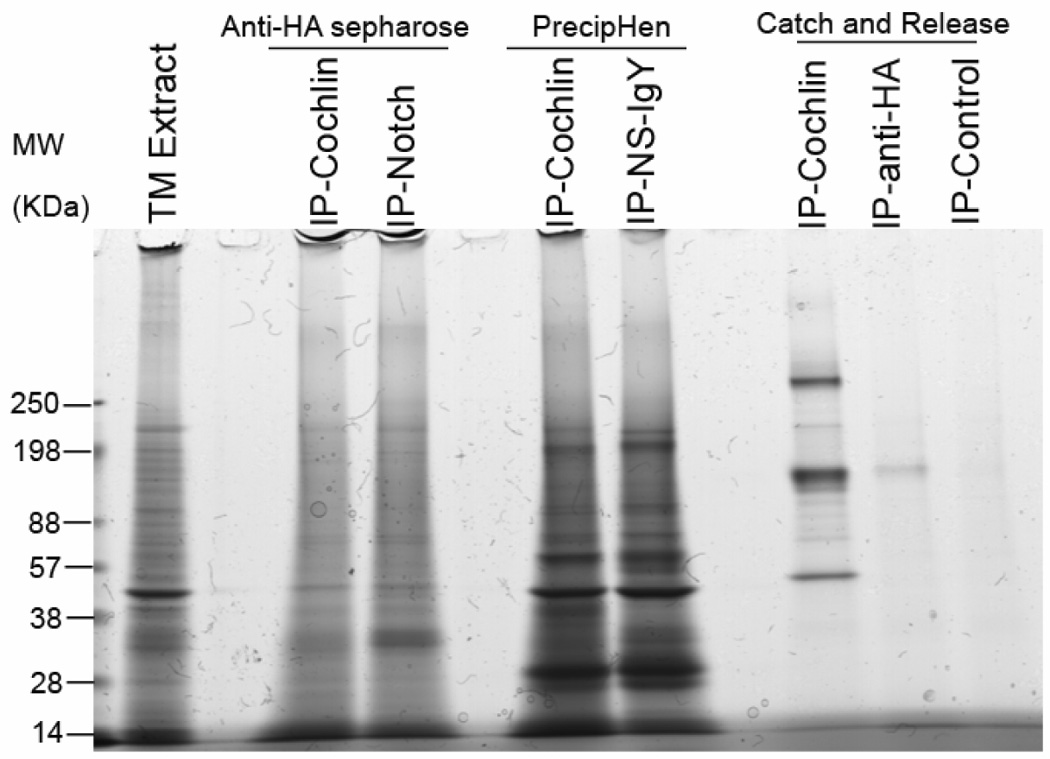 Fig4. Immunoprecipitation (IP) was carried out using three different methods.
Fig4. Immunoprecipitation (IP) was carried out using three different methods.
Quality Guarantee
High Purity
-
.jpg) Fig1. SDS-PAGE (COCH-1619H)
Fig1. SDS-PAGE (COCH-1619H)
Involved Pathway
COCH involved in several pathways and played different roles in them. We selected most pathways COCH participated on our site, such as , which may be useful for your reference. Also, other proteins which involved in the same pathway with COCH were listed below. Creative BioMart supplied nearly all the proteins listed, you can search them on our site.
| Pathway Name | Pathway Related Protein |
|---|
-
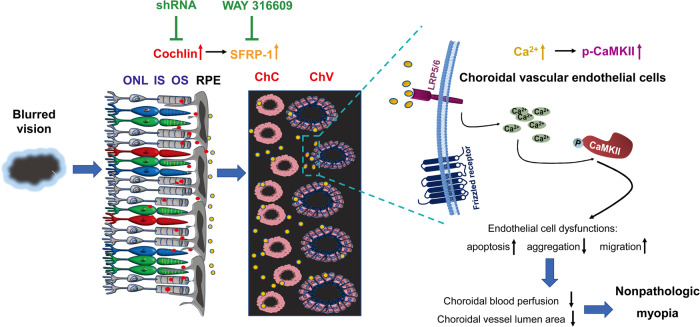 Fig1. Schematic illustration of the cochlin/SFRP1/CaMKII axis. (Chao Geng, 2023)
Fig1. Schematic illustration of the cochlin/SFRP1/CaMKII axis. (Chao Geng, 2023) -
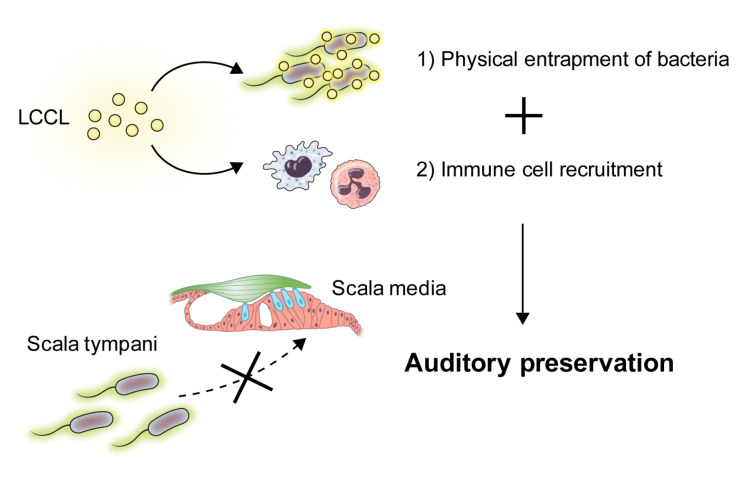 Fig2. Cochlin is the dual-armed immune-regulator of the inner ear. (Hyeong-Jun Rhyu, 2020)
Fig2. Cochlin is the dual-armed immune-regulator of the inner ear. (Hyeong-Jun Rhyu, 2020)
Protein Function
COCH has several biochemical functions, for example, . Some of the functions are cooperated with other proteins, some of the functions could acted by COCH itself. We selected most functions COCH had, and list some proteins which have the same functions with COCH. You can find most of the proteins on our site.
| Function | Related Protein |
|---|
Interacting Protein
COCH has direct interactions with proteins and molecules. Those interactions were detected by several methods such as yeast two hybrid, co-IP, pull-down and so on. We selected proteins and molecules interacted with COCH here. Most of them are supplied by our site. Hope this information will be useful for your research of COCH.
COL1A1;COL2A1;COL4A1
Resources
Related Services
Related Products
References
- Connors, NJ; Hoffman, RS; et al. Experimental Treatments for Cocaine Toxicity: A Difficult Transition to the Bedside. JOURNAL OF PHARMACOLOGY AND EXPERIMENTAL THERAPEUTICS 347:251-257(2013).
- Geng, LY; Gao, Y; et al. Gene Transfer of Mutant Mouse Cholinesterase Provides High Lifetime Expression and Reduced Cocaine Responses with No Evident Toxicity. PLOS ONE 8:-(2013).


